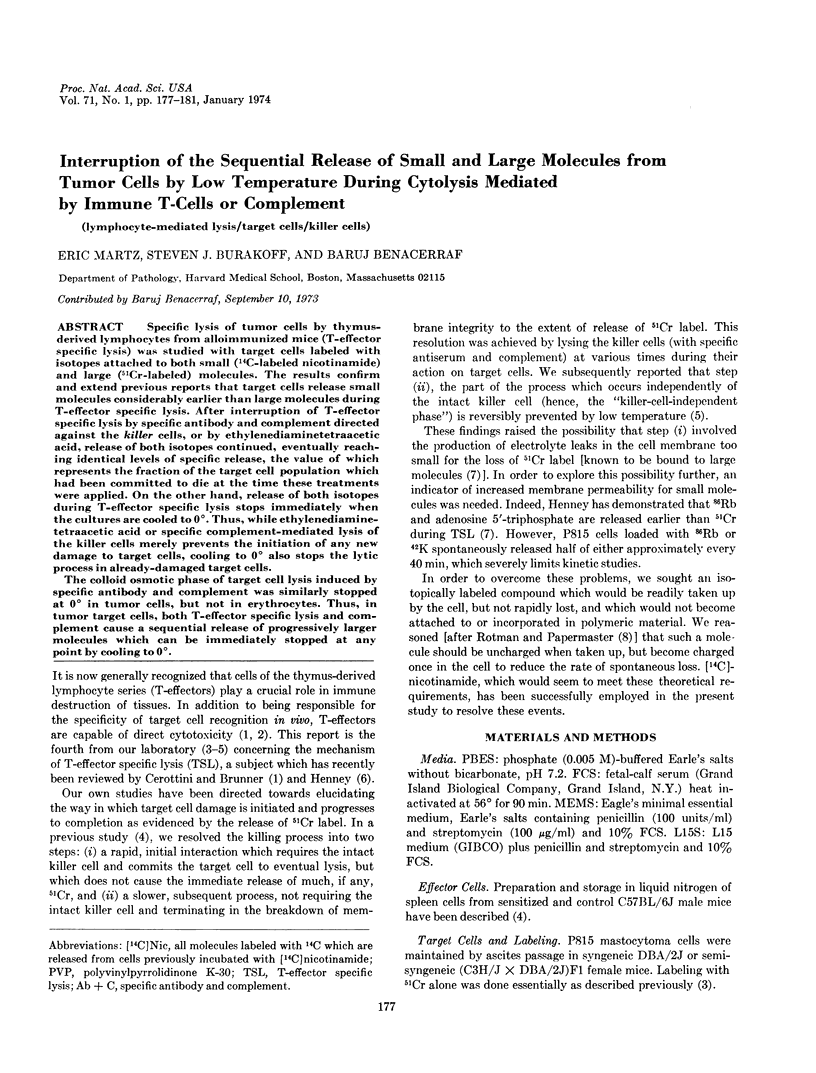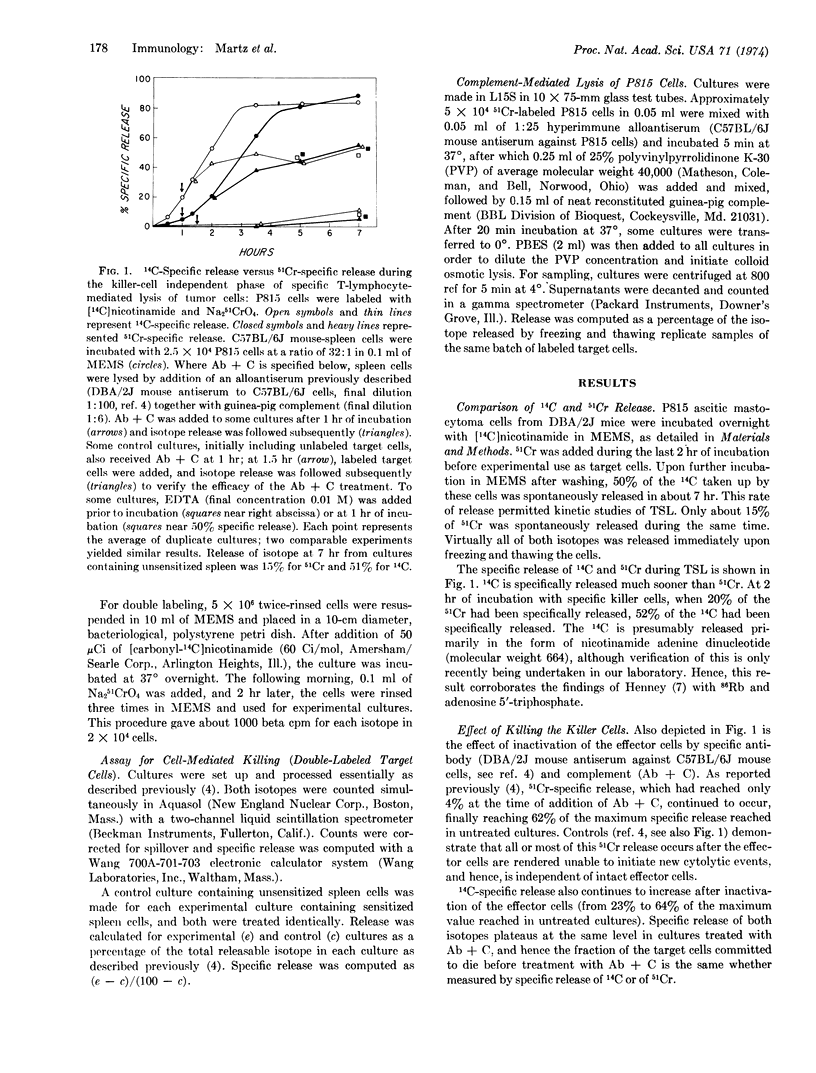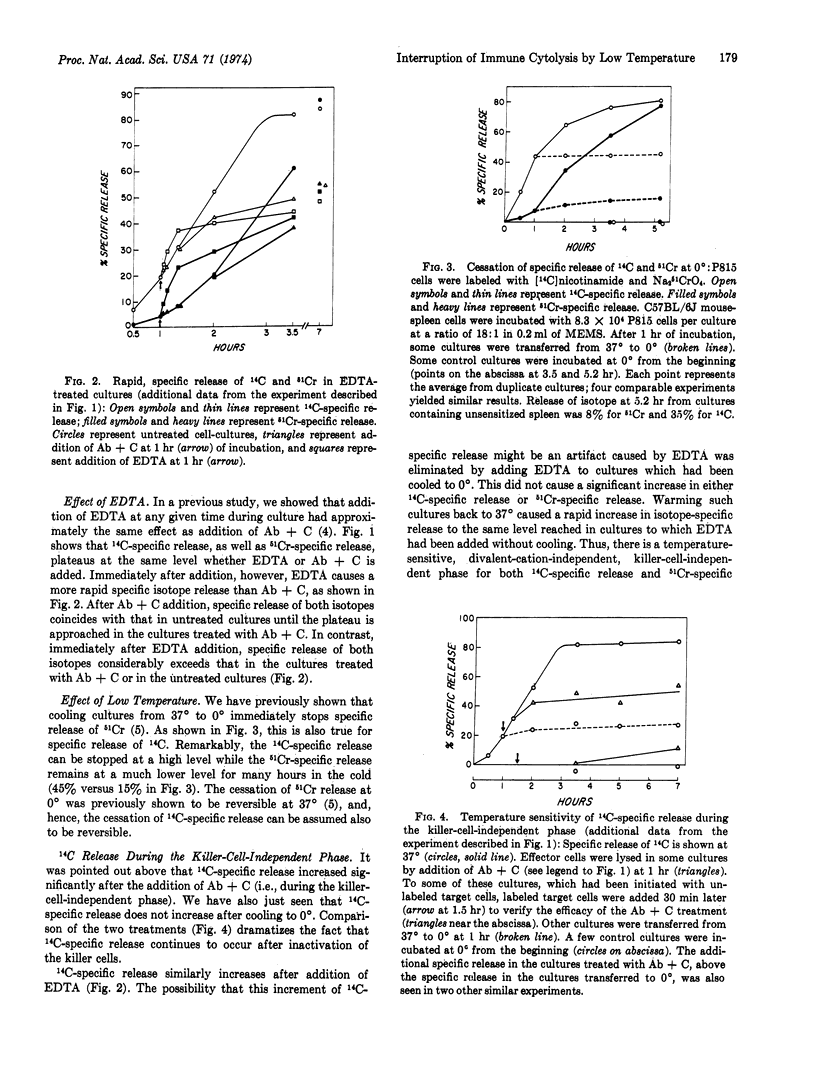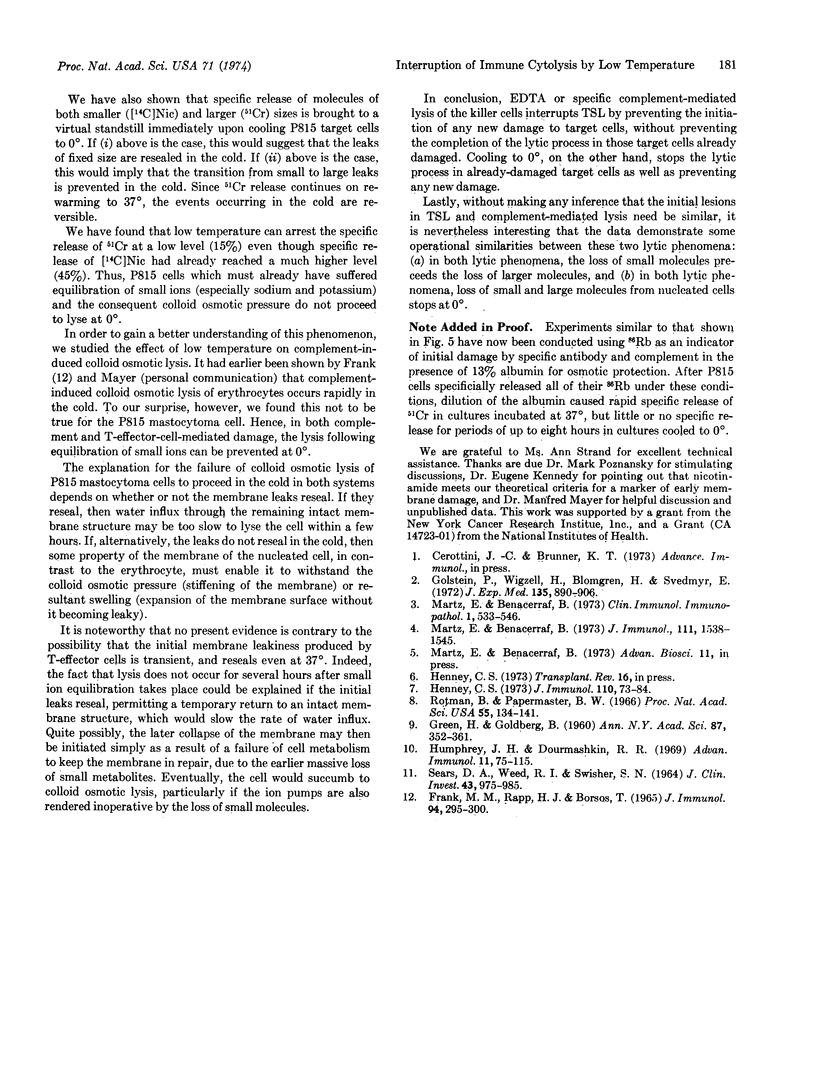Abstract
Specific lysis of tumor cells by thymus-derived lymphocytes from alloimmunized mice (T-effector specific lysis) was studied with target cells labeled with isotopes attached to both small (14C-labeled nicotinamide) and large (51Cr-labeled) molecules. The results confirm and extend previous reports that target cells release small molecules considerably earlier than large molecules during T-effector specific lysis. After interruption of T-effector specific lysis by specific antibody and complement directed against the killer cells, or by ethylenediaminetetraacetic acid, release of both isotopes continued, eventually reaching identical levels of specific release, the value of which represents the fraction of the target cell population which had been committed to die at the time these treatments were applied. On the other hand, release of both isotopes during T-effector specific lysis stops immediately when the cultures are cooled to 0°. Thus, while ethylenediaminetetraacetic acid or specific complement-mediated lysis of the killer cells merely prevents the initiation of any new damage to target cells, cooling to 0° also stops the lytic process in already-damaged target cells.
The colloid osmotic phase of target cell lysis induced by specific antibody and complement was similarly stopped at 0° in tumor cells, but not in erythrocytes. Thus, in tumor target cells, both T-effector specific lysis and complement cause a sequential release of progressively larger molecules which can be immediately stopped at any point by cooling to 0°.
Keywords: lymphocyte-mediated lysis, target cells, killer cells
Full text
PDF




Selected References
These references are in PubMed. This may not be the complete list of references from this article.
- FRANK M. M., RAPP H. J., BORSOS T. STUDIES ON THE TERMINAL STEPS OF IMMUNE HEMOLYSIS. II. RESOLUTION OF THE E TRANSFORMATION REACTION INTO MULTIPLE STEPS. J Immunol. 1965 Feb;94:295–300. [PubMed] [Google Scholar]
- GREEN H., GOLDBERG B. The action of antibody and complement on mammalian cells. Ann N Y Acad Sci. 1960 May 31;87:352–362. doi: 10.1111/j.1749-6632.1960.tb23205.x. [DOI] [PubMed] [Google Scholar]
- Golstein P., Wigzell H., Blomgren H., Svedmyr E. A. Cells mediating specific in vitro cytotoxicity. II. Probable autonomy of thymus-processed lymphocytes (T cells) for the killing of allogeneic target cells. J Exp Med. 1972 Apr 1;135(4):890–906. doi: 10.1084/jem.135.4.890. [DOI] [PMC free article] [PubMed] [Google Scholar]
- Henney C. S. Studies on the mechanism of lymphocyte-mediated cytolysis. II. The use of various target cell markers to study cytolytic events. J Immunol. 1973 Jan;110(1):73–84. [PubMed] [Google Scholar]
- Humphrey J. H., Dourmashkin R. R. The lesions in cell membranes caused by complement. Adv Immunol. 1969;11:75–115. doi: 10.1016/s0065-2776(08)60478-2. [DOI] [PubMed] [Google Scholar]
- Martz E., Benacerraf B. An effector-cell independent step in target cell lysis by sensitized mouse lymphocytes. J Immunol. 1973 Nov;111(5):1538–1545. [PubMed] [Google Scholar]
- Martz E., Benacerraf B. Inhibition of immune cell-mediated killing by heparin. Clin Immunol Immunopathol. 1973 Jul;1(4):533–546. doi: 10.1016/0090-1229(73)90009-3. [DOI] [PubMed] [Google Scholar]
- Rotman B., Papermaster B. W. Membrane properties of living mammalian cells as studied by enzymatic hydrolysis of fluorogenic esters. Proc Natl Acad Sci U S A. 1966 Jan;55(1):134–141. doi: 10.1073/pnas.55.1.134. [DOI] [PMC free article] [PubMed] [Google Scholar]
- SEARS D. A., WEED R. I., SWISHER S. N. DIFFERENCES IN THE MECHANISM OF IN VITRO IMMUNE HEMOLYSIS RELATED TO ANTIBODY SPECIFICITY. J Clin Invest. 1964 May;43:975–985. doi: 10.1172/JCI104983. [DOI] [PMC free article] [PubMed] [Google Scholar]


